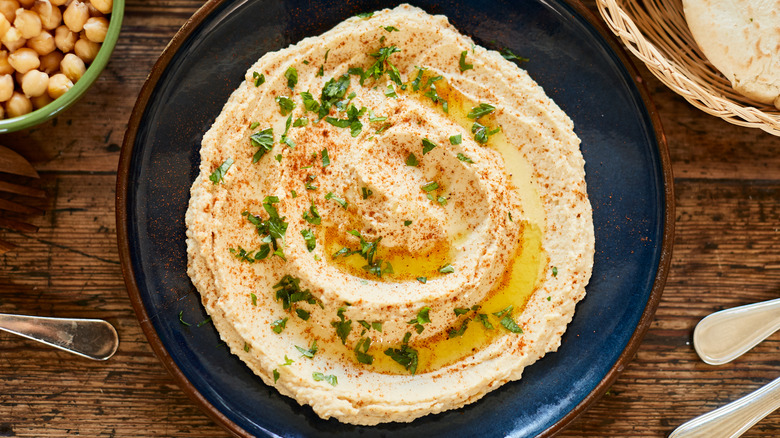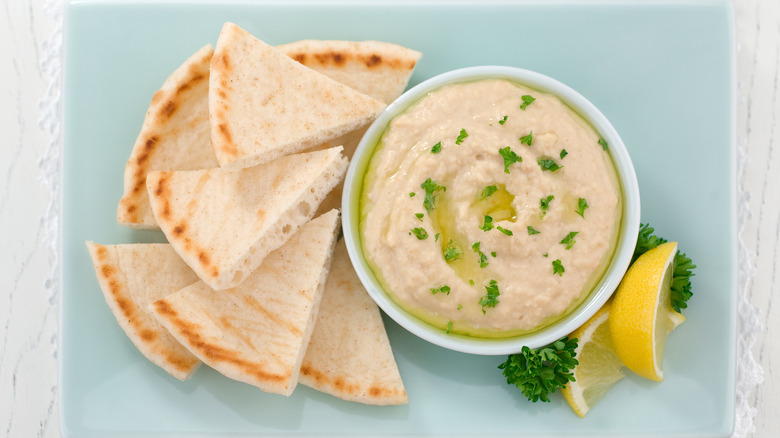The Ice Cube Tip That Will Help Amplify Your Hummus
Hummus comes in countless varieties, from roasted butternut squash to black bean, and it's easy to incorporate various flavors into a simple hummus recipe. One thing all hummus varieties strive for is a creamy texture. If you're having trouble reaching the desired creaminess with your homemade hummus, a few ice cubes will amplify the texture to professional standards.
While adding water can help thin your hummus, ice cubes are the secret ingredient to create a creamy texture. Ice cubes are full of tiny air bubbles that will infuse into your hummus as you blend all of the ingredients together. Similar to beating egg whites or churning ice cream, the blender breaks down the ice, effectively whipping the air bubbles throughout the hummus for the ultimate light and fluffy consistency.
To execute the ice cube tip, add all of the hummus ingredients into a blender or food processor and begin emulsifying. Add two to four ice cubes to the machine, pulsing to combine after each ice cube. After you've added the ice cubes, you can let the machine run for a few minutes. The longer you blend the ice cubes into your hummus, the creamier it will become. Between pulses, you can give your hummus a taste to gauge its texture and flavor.
Other textural tips
The ice cube trick is a straightforward and foolproof method to achieve creamy hummus, but there are other factors that affect texture, too. Using ice cubes in this way requires a bit of patience, but blending for four or more minutes optimizes the results significantly. If you don't have access to ice cubes, cold water is an adequate, albeit less effective, solution.
The major culprit for graininess and a dried-out texture in hummus is the garbanzo-bean component. You can use canned garbanzo beans or prepare them from scratch, but you should be sure to rid them of their fibrous outer shells and simmer them in salted water first. Stripping garbanzo beans of their peels reduces the chances of a grainy texture in your hummus, while simmering the beans softens and primes them for a richer, creamier texture.
Another important step is to ensure that the tahini you use is well combined. Tahini, like natural peanut butter, has oil separation that needs to be blended back into the paste before going into the blender. You could also whip the tahini in a separate bowl with lemon juice before adding it to the blender for an even better result.
The garbanzo beans' canning or cooking liquid, which can be turned into aquafaba, can be used as a thickening agent or a substitute for water in your hummus. Using this liquid alongside ice cubes will make for the ultimate creaminess.

